It is probably a common sight to see your teenager burying themselves in work, skipping meals to study and staying up to burn the midnight oil. Being in an environment that places emphasis not only on academic excellence, there comes added pressures from striving to be the best in CCAs and external commitments. Sometimes, the stress can be so overwhelming that it leads to your teenager coming home full of exasperation, and at times shutting themselves out.
Often driven by anxiety and stress, many students feel that such behaviours are more than necessary to achieve success – much of it when done continuously over an extended period of time leads to immense stress and burn out. Moreover, many students tie their self-worth and self-concept to how good a grade they get, or how well they perform at their co-curriculars. Thus, when they make a mistake, it seems as though their whole world comes crashing down, with many thoughts hinting at perfectionism running rampant in their minds. “I just cannot ever be good enough” and “I am a failure” are unfortunately all too common thoughts amongst students. Dwelling on these thoughts can perpetuate and even increase feelings of anxiety, causing them to sometimes feel inescapable stress.
Many parents are thus left feeling stuck — helpless as to how to help their child. As such, this newsletter hopes to provide a framework to understand and apply some effective strategies that you can use to better support and journey with your teenager through stressful periods in their lives.
The Wheel of Awareness
1) What is it, and how does it relate to emotions, thoughts and anxiety?
A good first step to help your child manage their anxiety and stress is helping them gain a deeper understanding of their own mind using the tool called the Wheel of Awareness.
This wheel, as shown below, represents our mind, where the inner hub represents the innermost part of our minds where we become aware of everything happening around us, the rim represents anything we can potentially pay attention to, such as our thoughts, desires, feelings and more. The many different rims can be understood as the many different aspects of ourselves.
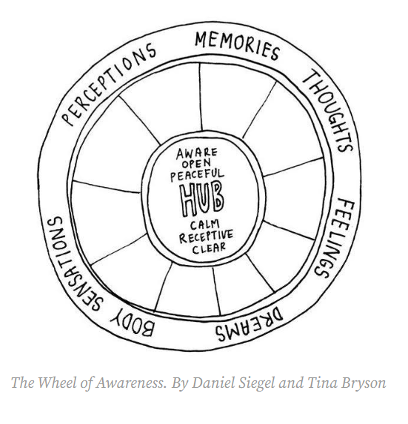
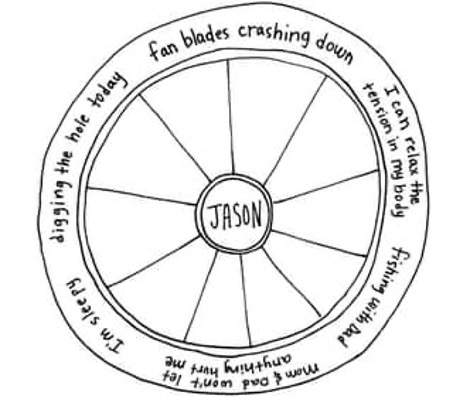
Stemming from this, mindsight is a term used to describe having an understanding of your own, as well as the mind of others. To have mindsight is to have an awareness of the many different aspects of self, which enables one to mindfully choose which rim to direct their attention to at any given moment. [1]
Unhealthy stress levels that arise from negative self thoughts often are a result of being fixated on one aspect of self. Consequently, how your teenager feels at any given moment is dependent on which rim they are giving their focus and attention to. For example, consistently focusing on rim points that produce anxiety such as “fear of getting anything less than an A” traps them in a continuous fearful state of mind, which sometimes is further sustained through experiencing physiological symptoms of anxiety like muscle tension or stomach churns.
Fixating on a particular negative rim such as “I didn’t get an A in the previous GP test” unfortunately means negating positive rims such as “I am a hard worker” or “I am always there for my peers”. For example, if your teen struggles with a particular subject but fails to integrate feelings of inadequacy with the other positive aspects of self (such as excelling in another subject), this temporal state of inferiority faces the danger of becoming perceived as a permanent personal trait — “I am stupid”.[2]
2) Using it to help your child cope with stress in a healthy way
Now that you are aware of the Wheel of Awareness and the many aspects of self which are all part of who we are, it is important to help your teen understand this too and apply it in their lives. Often, teens are not mindfully aware that there are indeed so many aspects of self that too deserve their attention, and that they actually can be in control of how much attention they are allocating to each rim.
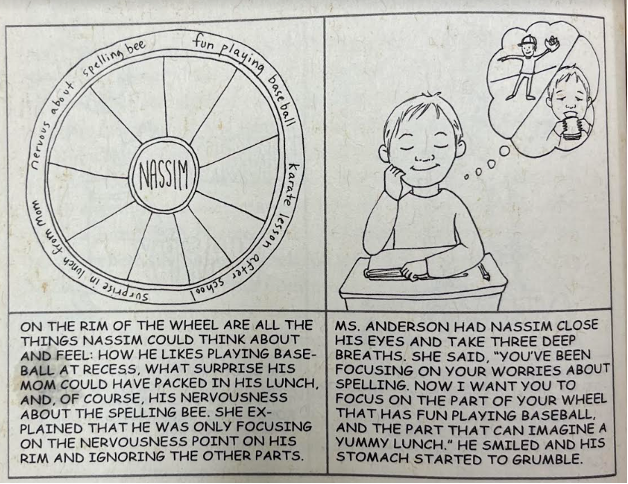
Hence, the first necessary step is to help them gain an awareness of all these aspects of self. You may have an open conversation with them and get them to think of their dreams, their hopes, their feelings, hobbies and perspectives (e.g. I am good at..). These make up their individual rims. Once they have gained a better understanding of themselves, the next step would be to encourage them to integrate their different rim points, especially when negative thoughts and stressful emotions arise. The process of integration of various rim points is crucial to prevent a single negative but temporal state of mind and emotions from morphing into their entire self-concept and personality. It is important for them to know that “I feel upset because I did not do as well as I thought I would” is as much part of themselves as “I am a hardworker”, and thus they should not discount the positive aspects of themselves.
When negative circumstances arise which tend to lead to anxiety or stress, guide them to think about other rim points, fostering an awareness that there are other options to redirect their focus and concentration to. Focusing all their attention on one particular (often negative) rim leads to ruminating on that negative thought and feeling stuck. Of course, it does take time to practise shifting attention back to their hub, and then out again to other rim points - after all, changing your mindsight does not happen overnight. Yet, while it may not be an instant cure to overwhelming anxiety on the spot, the changes made bit by bit will in the long-term help your teenager cope with stress in a healthier manner. It will also empower them to be in control of how they react and thus, experience difficult circumstances.
Our brains are surprisingly malleable – what we direct our attention to actually has a direct effect on the physical makeup of our brain. Known as neuroplasticity, the connections that the neurons in our brains make changes in response to changing experiences. This means that dysfunctional patterns of thinking that causes us to get stuck in unhealthy amounts of stress and negative feelings can be changed over time![3] Through a process of wiring and rewiring, as your teenager practises shifting their attention to other rims that are part of who they are, it stimulates the creation of new neural connections and alters the way your teen would react to future bouts of stressful circumstances.
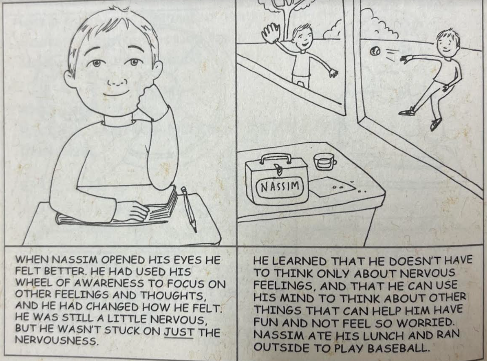
This helps to prevent any one particular rim that may tend to highlight perfectionistic tendencies from over-dominating their mind space, and thus emotions. Equipping them with the skills of seeing and thinking about situations from their hub instead of from only one particular rim point will enable your teen to be better able to handle stressful situations in the future, and it will not end with them feeling they are incompetent and a failure.
3) Emotions are temporary
It is helpful to remind your child that emotions are temporary – they are not personality traits, but rather a temporary affect or state. Developing mindsight comes with being able to go from “I am incompetent” to “I feel incompetent now”. In a moment of anxiety and stress, your teenager might feel as though that it is a permanent experience; also a reason why they may over-fixate on a rim that causes them anxiety. Reminding them of past experiences where an emotion came and went would help them remember the temporary nature of feelings, bringing them back to the hub for redirection of their attention.
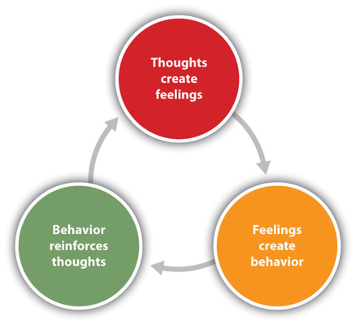
To tie everything together, the image on the left [4] shows how by fixating on a certain thought and feeling as though a negative emotion is permanent, keeps one trapped in a vicious cycle of maladaptive coping behaviour and anxiety. Conversely, when we choose to focus on a positive thought, it leads to a vicarious cycle of good feelings and healthy behaviours, that is self-reinforcing.
We hope that by introducing you to the Wheel of Awareness, you will get a better understanding of why your teenager may be caught in a cycle of negative thought and emotions, and more importantly, some ways to help them better cope and manage them.
We hope you find the suggestions in this article helpful.
If you require further support or would like to talk to one of us, please feel free to contact any of the counsellors at RGC via email: [email protected].
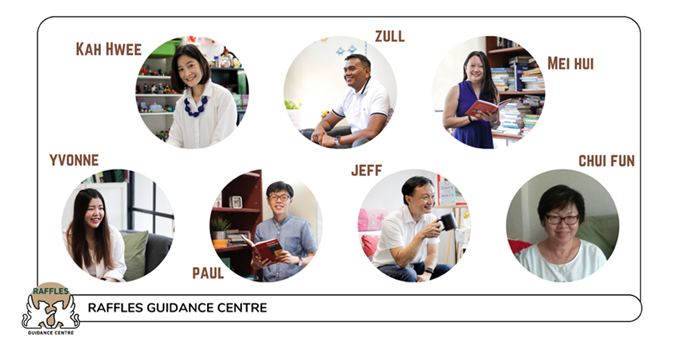
Warmest Regards,
RGC Team
[1] Parentotheca. (2023, July 4). The whole-brain child. Daniel Siegel and Tina Bryson. Parentotheca. https://parentotheca.com/2021/05/17/the-whole-brain-child-daniel-siegel-and-tina-bryson-summary/
[2] Siegel , D. (n.d.). Illustration of the Wheel of Awareness . Retrieved from https://m.facebook.com/drdansiegel/photos/in-this-illustration-we-focus-on-a-6-year-old-boy-named-jason-who-was-afraid-tha/10153781015227208/?_se_imp=0Wmeu0HS4xyRLeSCD.
[3] Sussex Publishers. (n.d.). Neuroplasticity. Psychology Today. https://www.psychologytoday.com/sg/basics/neuroplasticity
[4] Courtney E. Ackerman, MA. (2023, June 28). 40 empathy activities & worksheets for students & adults. PositivePsychology.com. https://positivepsychology.com/kindness-activities-empathy-worksheets/#empathy